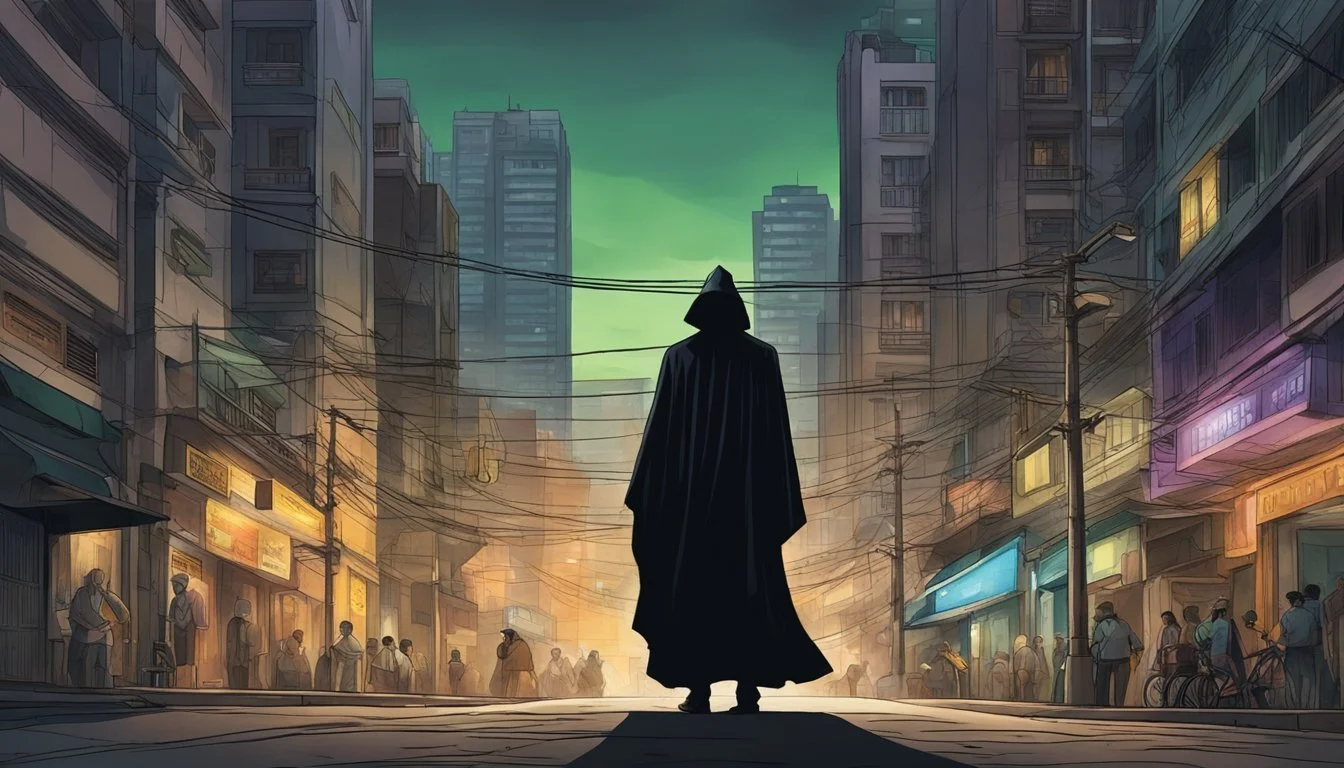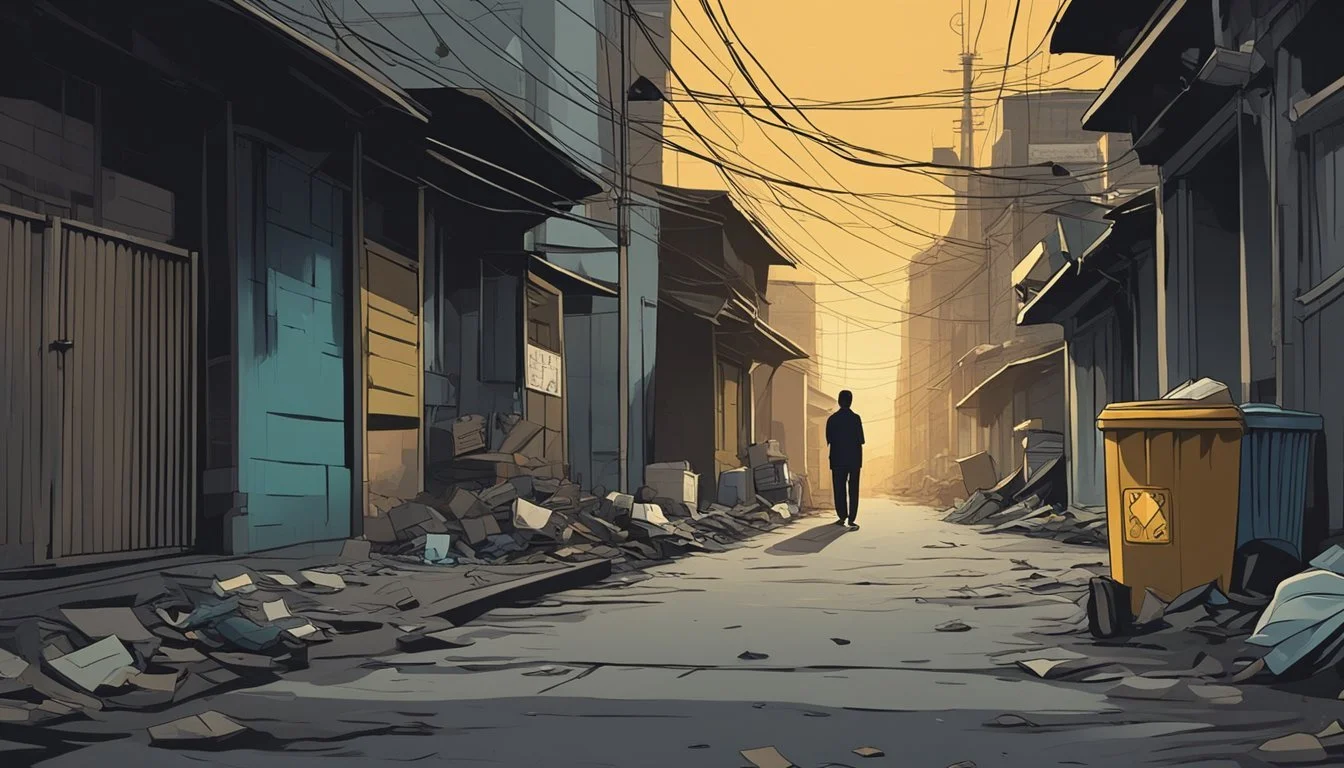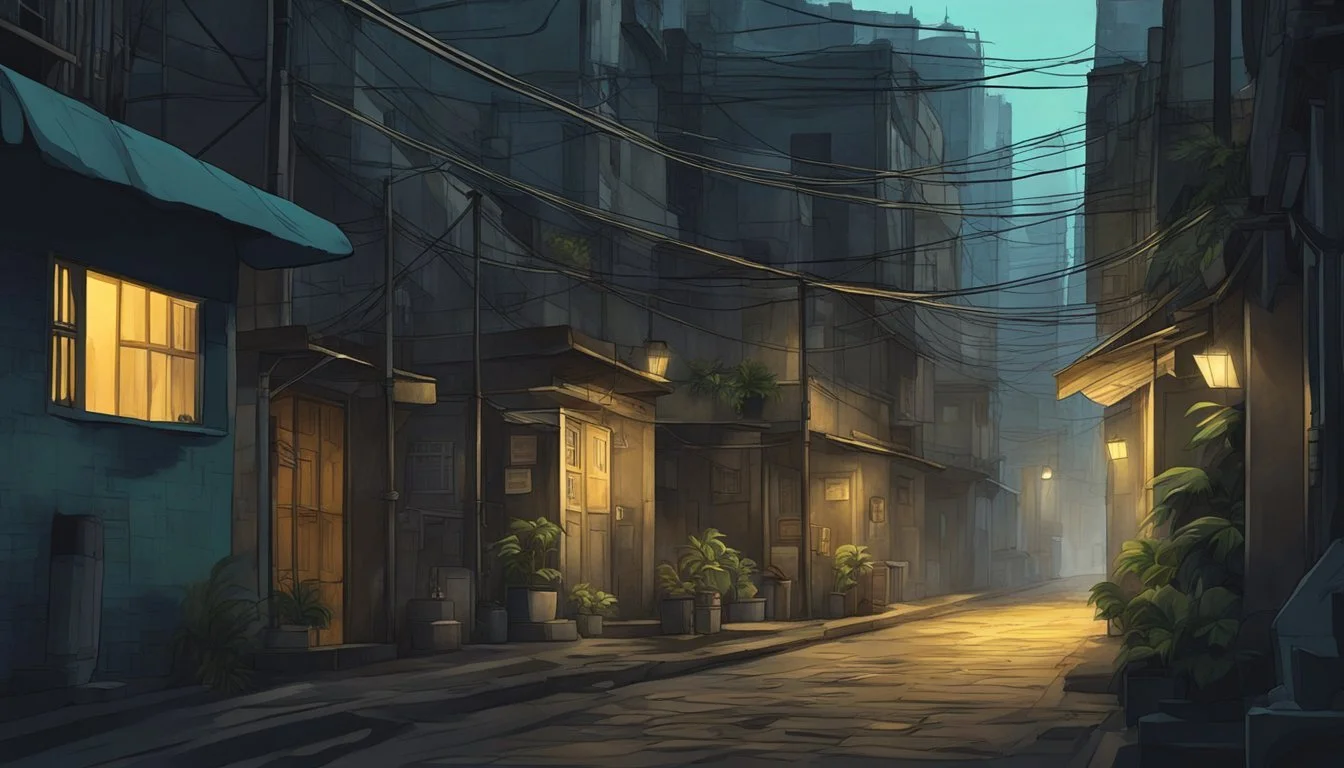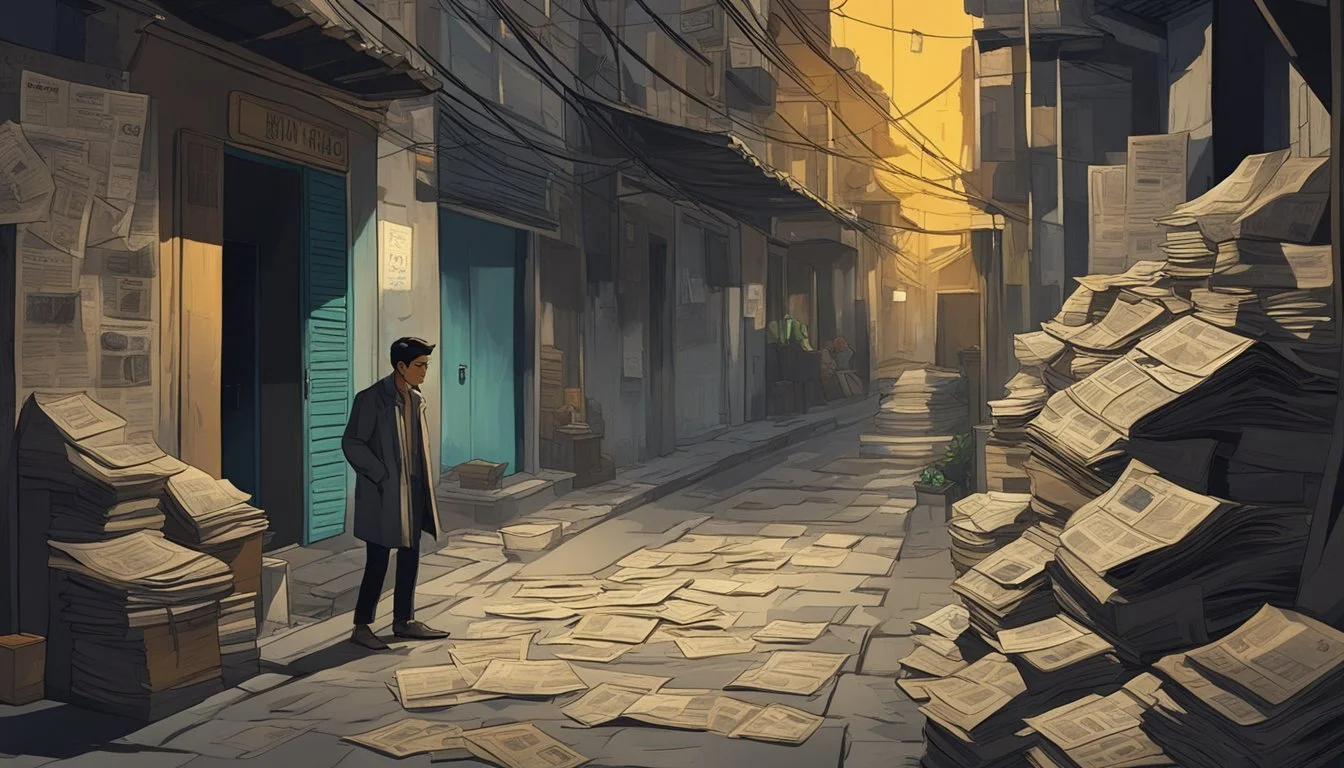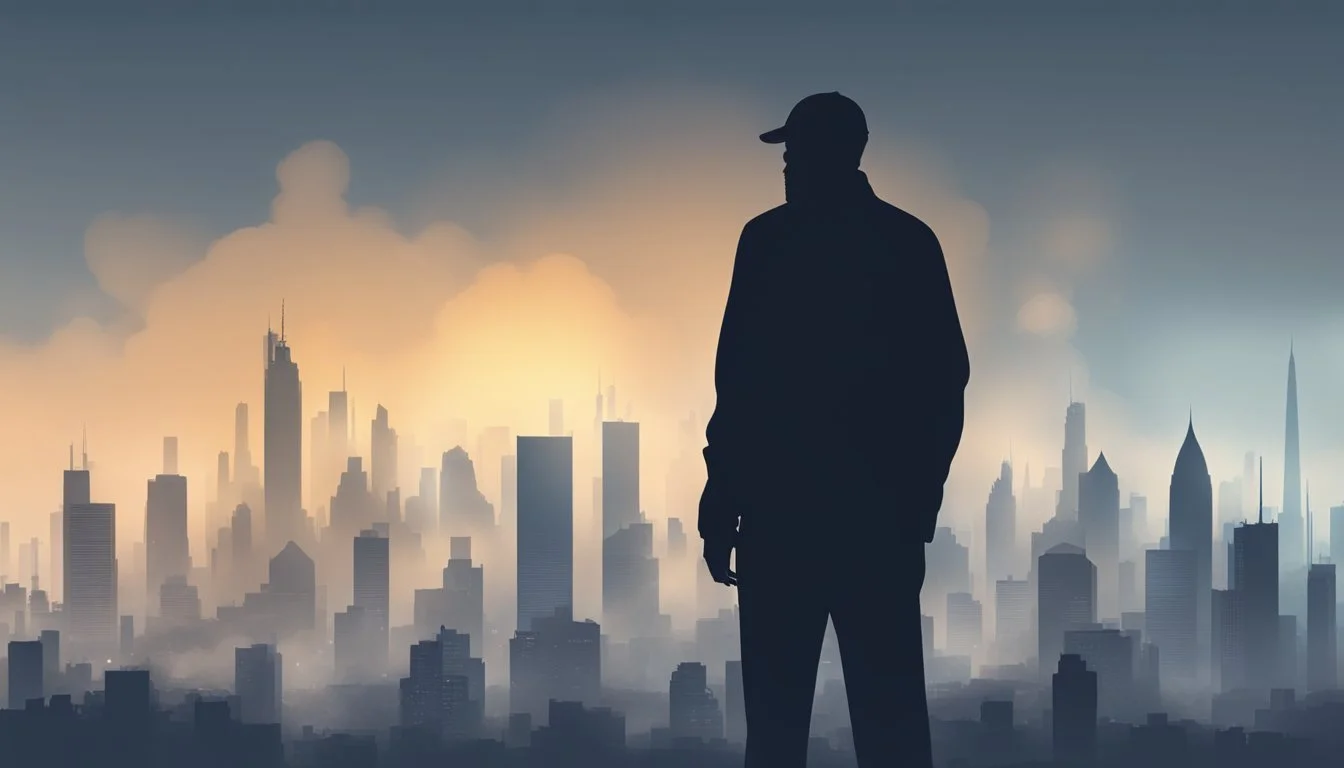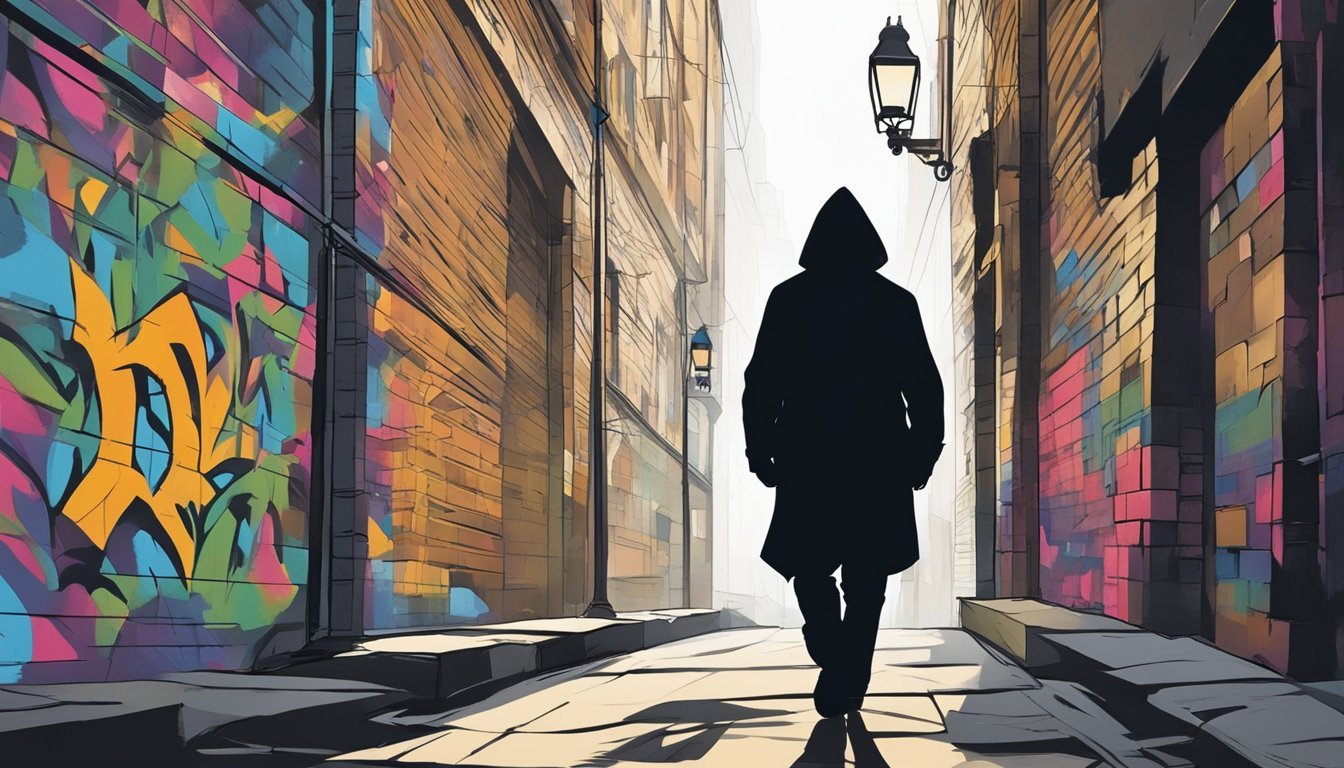Is Romeo Quijano, Manila's Forgotten Killer, Still At Large?
New Evidence Emerges in Decades-Old Cold Case
Romeo Quijano, a notorious Filipino serial killer, terrorized Manila in the 1960s. His crimes captivated the public and became the subject of extensive media coverage, including articles by journalist Nick Joaquin writing under the pen name Quijano de Manila. Romeo Quijano is no longer at large, having been apprehended and brought to justice decades ago.
The case of Romeo Quijano shed light on the darker aspects of life in the Philippine capital during that era. His actions exposed vulnerabilities in law enforcement and societal issues that allowed his criminal activities to continue for an extended period. The story of this killer has been documented in various forms, including documentaries that explore his background and motives.
While Romeo Quijano's reign of terror has long since ended, his legacy continues to fascinate true crime enthusiasts and researchers. The case serves as a grim reminder of a turbulent period in Manila's history and the importance of robust criminal justice systems. Today, Quijano remains a subject of study for those seeking to understand the factors that contribute to such extreme criminal behavior.
The Enigma of Romeo Quijano
Romeo Quijano remains a mysterious figure in Manila's criminal history. Known as "Manila's Forgotten Killer," his true identity and motivations have puzzled investigators for decades.
Quijano's crimes reportedly occurred in the late 20th century, sending shockwaves through the Philippine capital. His alleged acts of violence left an indelible mark on the city's collective memory.
Despite the notoriety of his supposed crimes, concrete details about Quijano's life and activities are surprisingly scarce. This lack of information has only fueled speculation and urban legends surrounding his case.
Some experts question whether Quijano was a single individual or a composite of multiple criminals. This uncertainty has added to the enigmatic nature of the case.
Law enforcement efforts to apprehend Quijano were hampered by limited forensic capabilities at the time. Recent advancements in forensic science have sparked renewed interest in the cold case.
The ongoing mystery of Romeo Quijano raises important questions about criminal investigations in Manila during that era. It highlights the challenges faced by law enforcement in solving complex cases with limited resources.
As time passes, separating fact from fiction in the Quijano case becomes increasingly difficult. The story serves as a reminder of Manila's complex criminal history and the enduring impact of unsolved cases on a city's psyche.
Historical Context
The Philippines experienced significant political and social upheaval in the latter half of the 20th century. These events shaped Manila's urban landscape and criminal underworld, providing crucial context for understanding Romeo Quijano's alleged crimes.
Marcos Era and Martial Law
Ferdinand Marcos declared martial law in 1972, ushering in an era of authoritarian rule. This period saw increased military presence in Manila and curtailed civil liberties. Crime rates rose as economic inequality widened. The regime's corruption fostered a climate of impunity, allowing some criminals to operate with relative freedom.
Nick Joaquin, writing as Quijano de Manila, documented the gritty realities of urban life during this time. His articles in the Philippine Free Press shed light on the city's underbelly, exposing readers to stories of crime and injustice.
People Power Revolution and Its Aftermath
The 1986 People Power Revolution ousted Marcos and restored democracy. This peaceful uprising brought hope for positive change, but Manila's criminal elements persisted. The transition period saw power vacuums in some areas, which opportunistic individuals exploited.
Post-revolution, efforts to reform the justice system and address corruption faced challenges. Some criminals adapted to the new political landscape, finding ways to evade law enforcement. The aftermath of the revolution also saw increased focus on human rights, potentially affecting how authorities approached criminal investigations and prosecutions.
Literature and Cultural Commentary
Philippine literature has played a crucial role in shaping societal discourse and national identity. Writers like Nick Joaquin have used their craft to explore complex themes and provide insightful commentary on Filipino culture and politics.
Nick Joaquin and Philippine Narrative
Nick Joaquin, widely regarded as one of the most important Filipino writers, made significant contributions to Philippine literature. Under the pen name Quijano de Manila, he wrote extensively for the Philippine Free Press magazine. His journalistic work focused on real-life crime stories and social issues in 1960s Manila.
Joaquin's works, such as "May Day Eve" and "The Woman Who Had Two Navels," explored themes of identity, colonialism, and cultural change. In 1976, he was named National Artist for Literature, recognizing his immense impact on Philippine letters.
The Role of Literature in Sociopolitical Discourse
Philippine literature has served as a powerful tool for sociopolitical commentary. Writers like Joaquin used their platforms to address pressing issues and challenge societal norms.
Joaquin's articles provided a gritty, unflinching look at urban life and crime in the Philippine capital. His work often blended fact and fiction, creating narratives that resonated deeply with readers.
Literature has played a vital role in shaping public opinion and fostering critical thinking about national issues. It has served as a mirror to society, reflecting its complexities and contradictions.
The Landscape of Crime in Manila
Manila's criminal landscape reflects complex socioeconomic factors and historical influences. Urban areas face persistent challenges with violent and property crimes, while law enforcement struggles to address deeply rooted issues.
Patterns and Profiles of Criminal Activities
Manila grapples with a range of criminal activities. Petty theft and robbery remain common, particularly in crowded areas and tourist spots. Drug-related offenses continue to be a major concern, with the Philippine National Police targeting both users and distributors. Organized crime groups engage in extortion, human trafficking, and cybercrime.
Violent crimes like homicide and assault occur with troubling frequency in certain neighborhoods. Gunmen involved in contract killings pose an ongoing threat. White-collar crimes such as fraud and corruption also plague the city's business and government sectors.
Impact of Crime on Local Neighborhoods
Crime rates vary significantly across Manila's diverse neighborhoods. Low-income areas often experience higher levels of street crime and gang activity. This creates a climate of fear, limiting residents' mobility and economic opportunities.
High-crime zones see decreased property values and business investment. Community cohesion suffers as people become wary of their neighbors. In contrast, wealthy enclaves employ private security, creating stark disparities in safety.
The Philippine National Police struggles to maintain consistent presence in all areas. This leads some neighborhoods to form their own watch groups. Crime's impact extends beyond immediate victims, shaping daily life and long-term development across Manila's urban landscape.
Investigative Pathways
The search for Romeo Quijano involved complex investigative efforts. Law enforcement agencies pursued multiple avenues to gather evidence and build a case against the suspected killer.
Assessing the Evidence
Forensic analysis played a crucial role in the investigation. Crime scene technicians meticulously collected physical evidence from various locations. DNA samples, fingerprints, and fiber traces were carefully examined and cataloged.
Investigators also focused on potential murder weapons. They compared tool marks on victims' bodies to objects found in Quijano's possession. Ballistics experts analyzed bullet casings recovered from crime scenes.
Financial records provided another investigative pathway. Detectives scrutinized Quijano's bank statements and transactions for suspicious patterns or large cash withdrawals.
Eyewitness Accounts and Police Records
Eyewitness testimony proved invaluable to the investigation. Detectives interviewed numerous individuals who claimed to have seen Quijano in the vicinity of crime scenes.
Survivors' statements offered crucial details about the attacker's appearance and behavior. These accounts helped police create a more accurate profile of the suspect.
Law enforcement agencies cross-referenced police reports from different jurisdictions. This process revealed similarities in modus operandi across multiple unsolved cases.
Tip lines were established to encourage public cooperation. Anonymous informants provided leads that investigators pursued diligently.
Human Rights Perspectives
Human rights concerns have emerged regarding extrajudicial killings and accountability in the Philippines. Allegations of abuses during anti-drug operations have drawn scrutiny from international organizations and courts.
Human Rights Abuses in Drug Wars
The Philippine government's war on drugs has faced criticism for alleged human rights violations. Reports indicate thousands of extrajudicial killings since 2016, primarily in low-income areas. Human Rights Watch documented cases of police planting evidence and falsifying reports to justify killings.
In Davao City, then-mayor Rodrigo Duterte was accused of supporting vigilante groups targeting suspected criminals. Critics argue these tactics spread nationwide after Duterte became president in 2016.
International Criminal Court and Accountability
The International Criminal Court (ICC) opened a preliminary examination in 2018 into alleged crimes against humanity in the Philippines' drug war. In 2021, the ICC authorized a full investigation, focusing on killings between 2011-2019.
The Philippine government initially cooperated but later withdrew from the ICC in 2019. Human rights groups argue the ICC investigation is crucial for accountability. The court continues to assert jurisdiction over crimes committed while the Philippines was a member state.
Public Health and Social Fallout
Urban violence and toxic exposure have created complex public health challenges in Manila. Pesticide use and industrial pollution intersect with crime and poverty, leading to widespread health complaints.
The Toxicology of Urban Violence
Manila's crime-ridden streets harbor hidden toxicological dangers. Drug users face risks beyond addiction, as tainted substances circulate widely. Contaminated water sources in slum areas compound health issues. The Department of Health struggles to address the overlapping crises of violence and environmental hazards.
Toxicology reports reveal alarming levels of heavy metals in victims of violent crime. This suggests a potential link between environmental toxins and aggressive behavior. Lead poisoning, in particular, correlates with increased violent tendencies in affected communities.
Pesticides, Health Complaints, and Official Response
Pesticide use in Manila and surrounding agricultural areas has sparked controversy. Dr. Romeo Quijano, a toxicology expert, raised concerns about pesticide-related health issues. His research highlighted complaints of respiratory problems, skin disorders, and neurological symptoms among residents near sprayed fields.
Official responses to these concerns have been mixed. The Department of Health acknowledges some risks but maintains that proper application methods minimize dangers. Critics argue this stance downplays serious health threats.
A survey of Manila Bay fisherfolk revealed widespread health complaints potentially linked to pesticide runoff. Reported symptoms included:
Persistent coughing
Skin rashes
Headaches
Dizziness
These issues underscore the need for more rigorous monitoring of pesticide use and its impacts on public health in urban and peri-urban areas.
The Duterte Administration and Crime Policy
Rodrigo Duterte's presidency marked a harsh shift in Philippine crime policy. His administration launched controversial anti-drug campaigns and faced accusations of human rights violations.
Davao Death Squad and Duterte's Legacy
Duterte's tough-on-crime approach began during his tenure as mayor of Davao City. The Davao Death Squad, a vigilante group, allegedly carried out extrajudicial killings of suspected criminals. Duterte denied involvement but openly supported their actions.
As president, Duterte expanded this model nationwide. He encouraged police and civilians to kill drug dealers and users. The administration claimed these measures were necessary to combat the shabu (methamphetamine) epidemic.
Human rights organizations condemned the resulting violence. Thousands of deaths were attributed to Duterte's drug war. Many victims were low-level dealers or users from impoverished areas.
Policing Methods and Controversies
Duterte's administration implemented aggressive policing tactics. Police conducted raids and sting operations targeting suspected drug criminals. Critics argued these methods often violated due process and human rights.
The justice system struggled to handle the influx of drug-related cases. Prisons became overcrowded. Reports of police planting evidence and extorting families emerged.
International bodies, including the United Nations, called for investigations into human rights abuses. Duterte's government resisted external scrutiny and threatened to withdraw from international agreements.
The drug war's impact extended beyond criminals. Innocent bystanders, including children, were sometimes caught in the crossfire. This collateral damage further fueled criticism of Duterte's policies.
Mindanao and the Broader Scope of Unrest
Mindanao's complex history of conflict intersects with issues of development, human rights, and regional stability in the southern Philippines. The island faces ongoing challenges that impact local communities and the nation as a whole.
Conflict, Development, and Human Rights in Mindanao
Mindanao has experienced decades of civil unrest, rooted in historical grievances and socioeconomic disparities. The island's rich natural resources have attracted development projects, but these often clash with indigenous land rights and local interests.
Human rights concerns in Mindanao include forced displacements, extrajudicial killings, and limited access to basic services. The Philippine government has implemented martial law in parts of Mindanao to address security issues, leading to debates about its effectiveness and impact on civil liberties.
Peace initiatives in Mindanao aim to address the root causes of conflict. These efforts involve negotiations between the government and various groups, including separatist movements and indigenous communities. The goal is to find sustainable solutions that balance development needs with human rights protections.
International organizations and local civil society groups play crucial roles in monitoring human rights situations and supporting peace-building efforts in Mindanao. Their work focuses on conflict resolution, community development, and advocacy for marginalized populations affected by ongoing unrest.
Human-centered, climate-sensitive development strategies are emerging as potential pathways to address Mindanao's challenges. These approaches seek to integrate economic growth with environmental sustainability and respect for cultural diversity.
Human Rights Watch, Amnesty International, and other organizations regularly report on Mindanao's situation, highlighting both progress and ongoing concerns in the region's complex landscape of conflict and development.
Continuing the Pursuit of Justice
The search for Romeo Quijano remains active, with law enforcement agencies employing various strategies to locate and apprehend the elusive suspect. Efforts to bring him to justice continue through international cooperation and advanced investigative techniques.
The Watch List and Future Operations
Romeo Quijano's name appears on multiple international watch lists, alerting border security agencies worldwide. Interpol has issued a Red Notice, requesting member countries to locate and provisionally arrest him for extradition.
Law enforcement agencies regularly review and update Quijano's profile, incorporating new information and potential sightings. Facial recognition technology plays a crucial role in scanning surveillance footage and identifying possible matches.
Investigators maintain contact with Quijano's known associates and family members, monitoring their activities for any leads. Special task forces conduct periodic operations in areas where Quijano has historical ties or where recent intelligence suggests he might be hiding.
The public plays a vital role in the ongoing investigation. Authorities encourage citizens to report any suspicious activities or potential sightings, emphasizing the importance of community involvement in solving cold cases.

